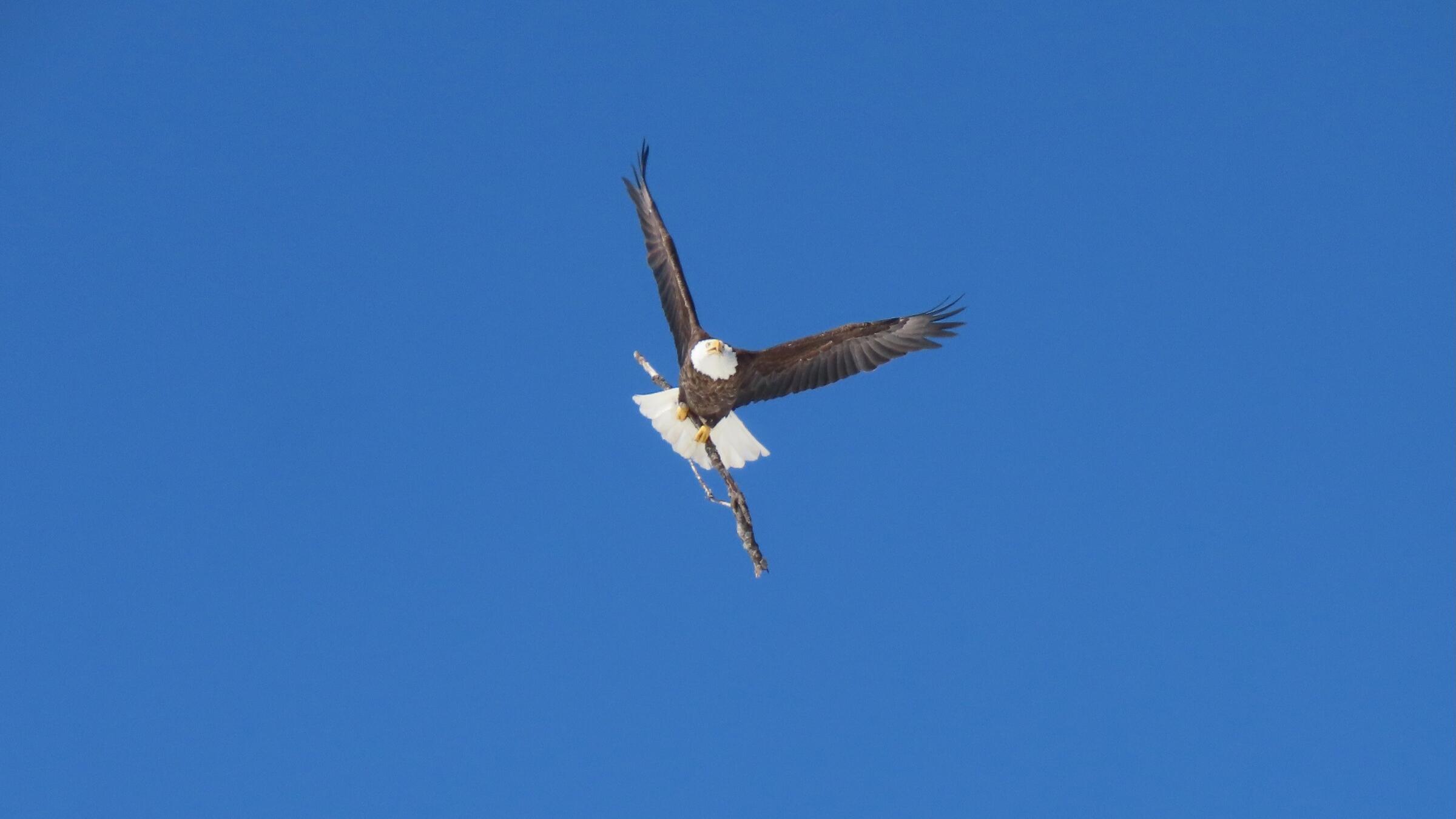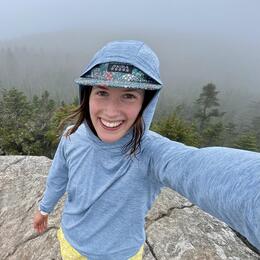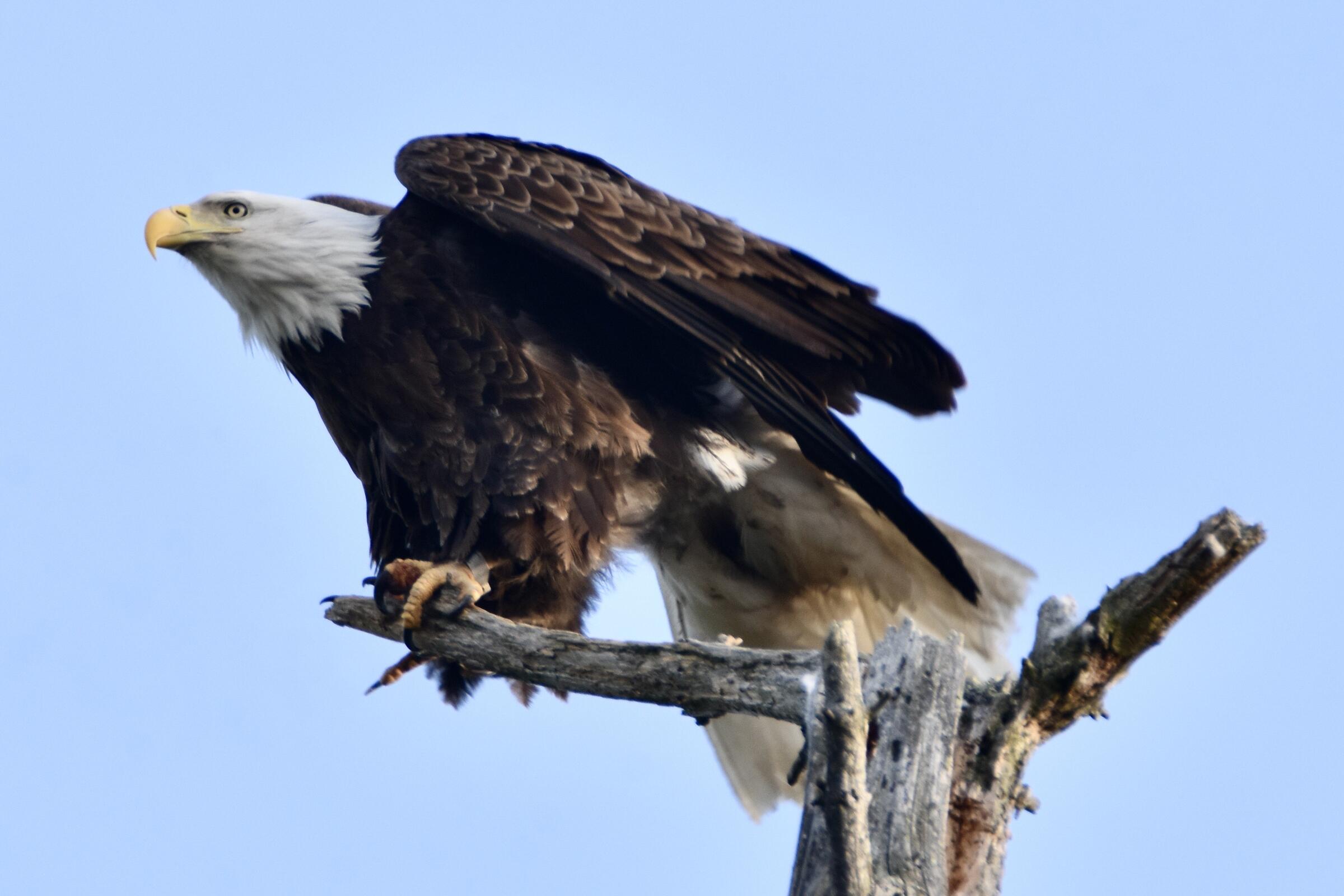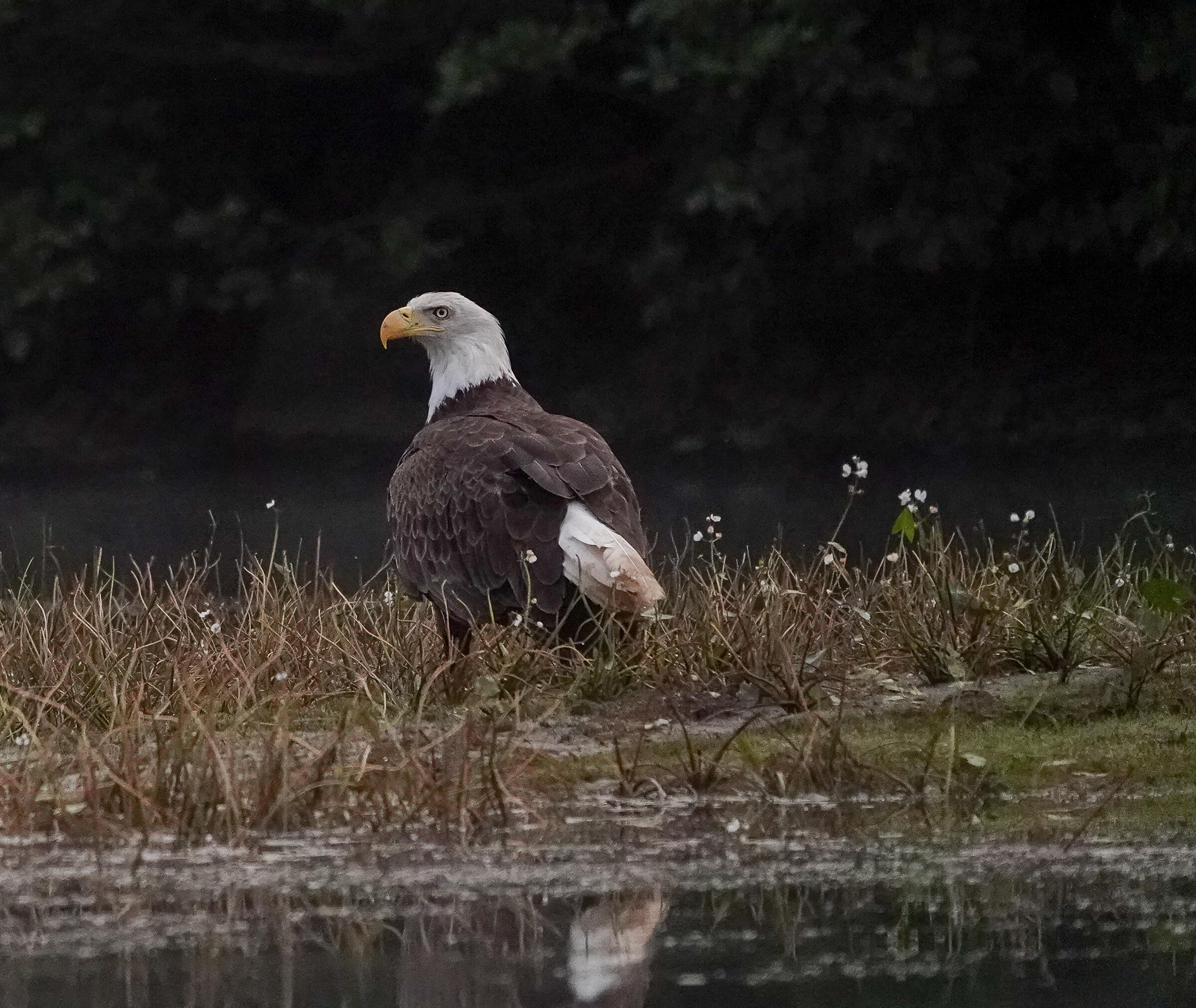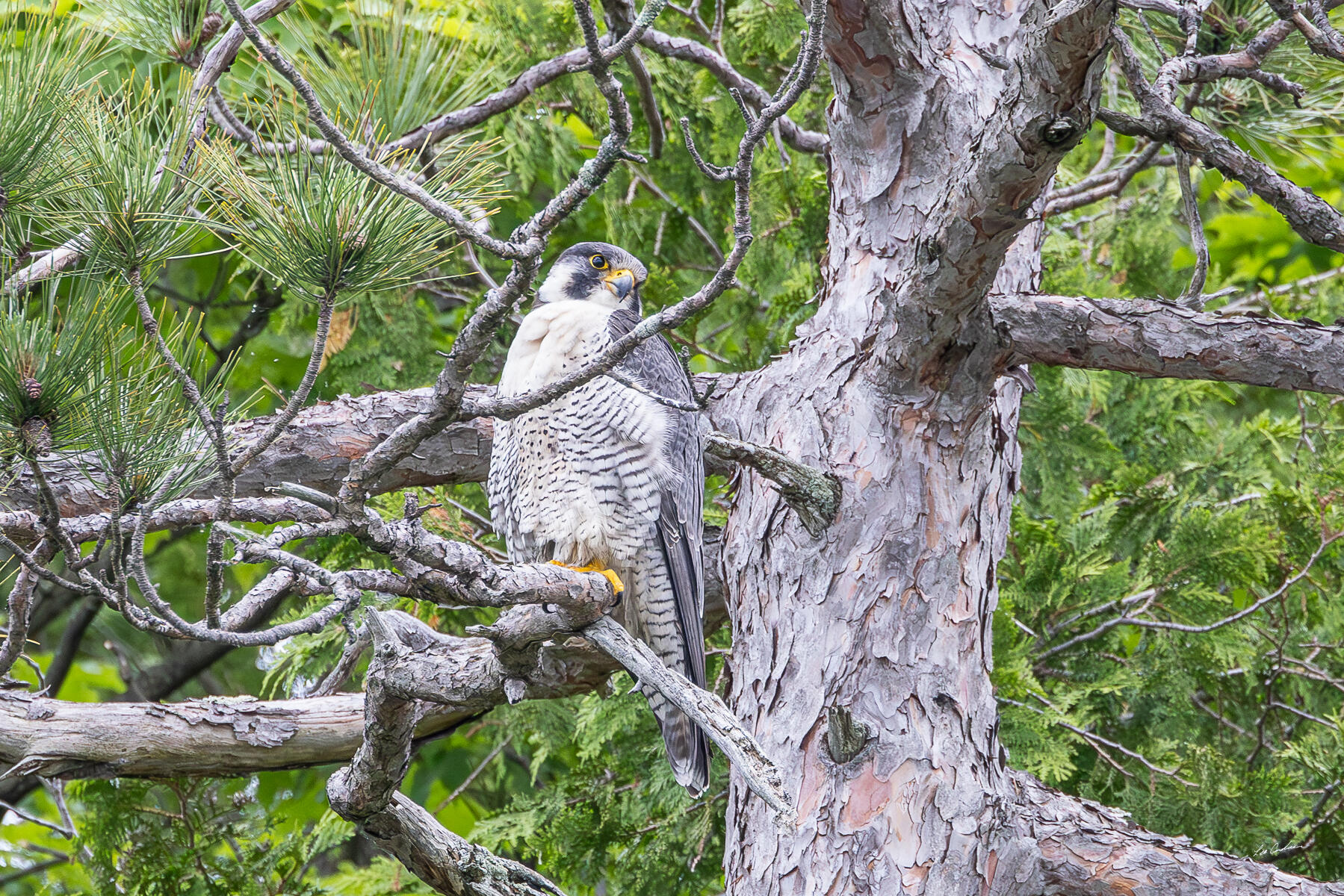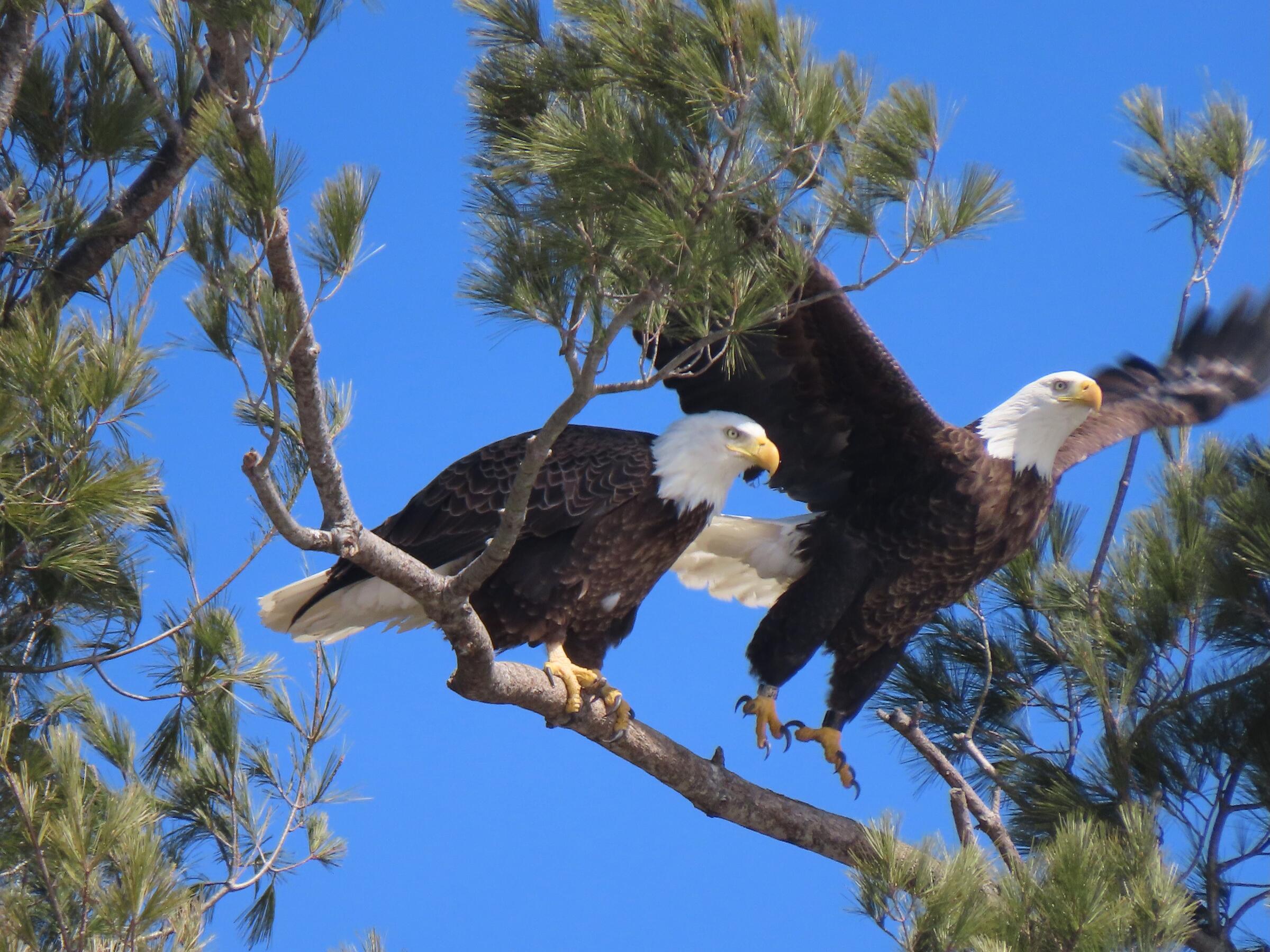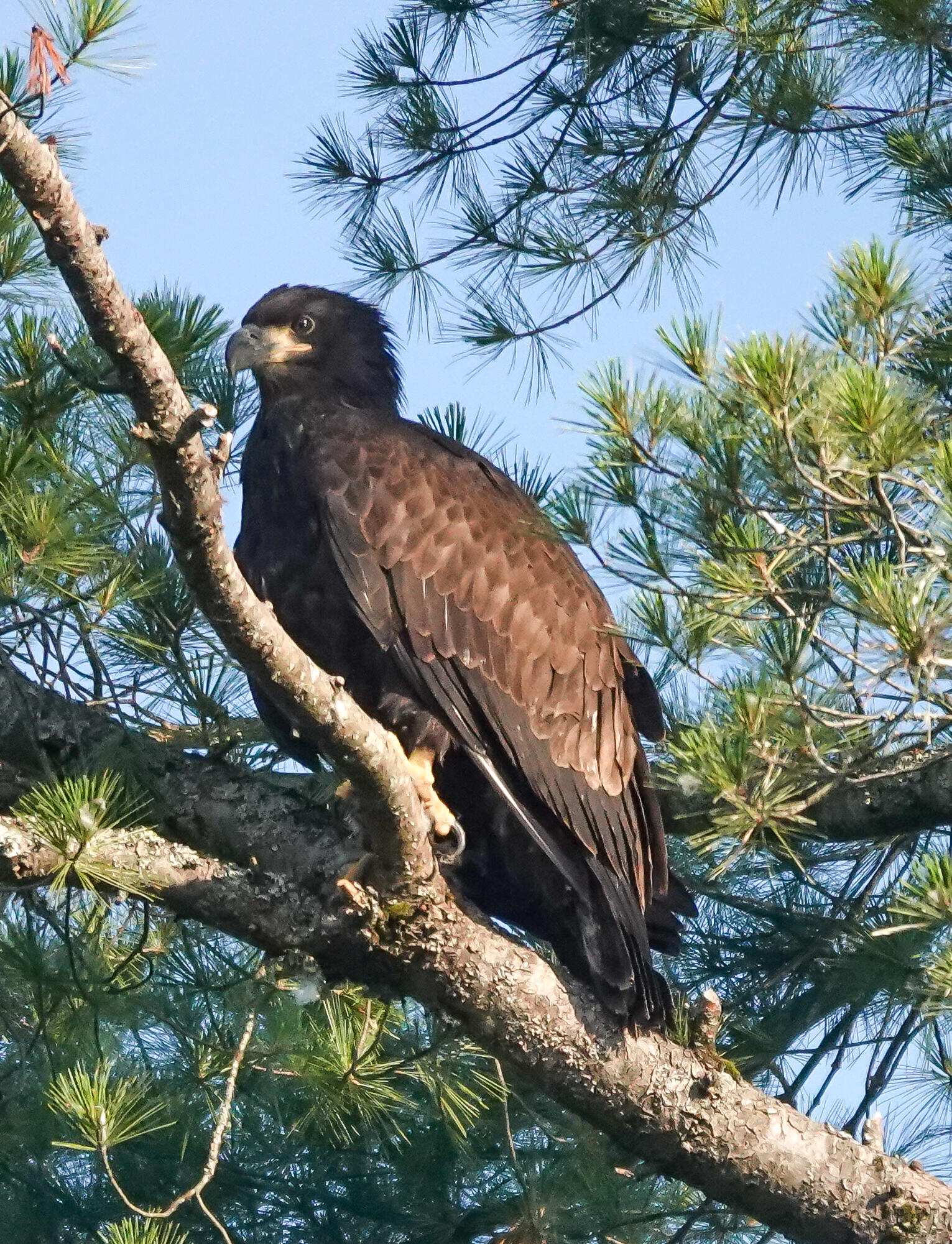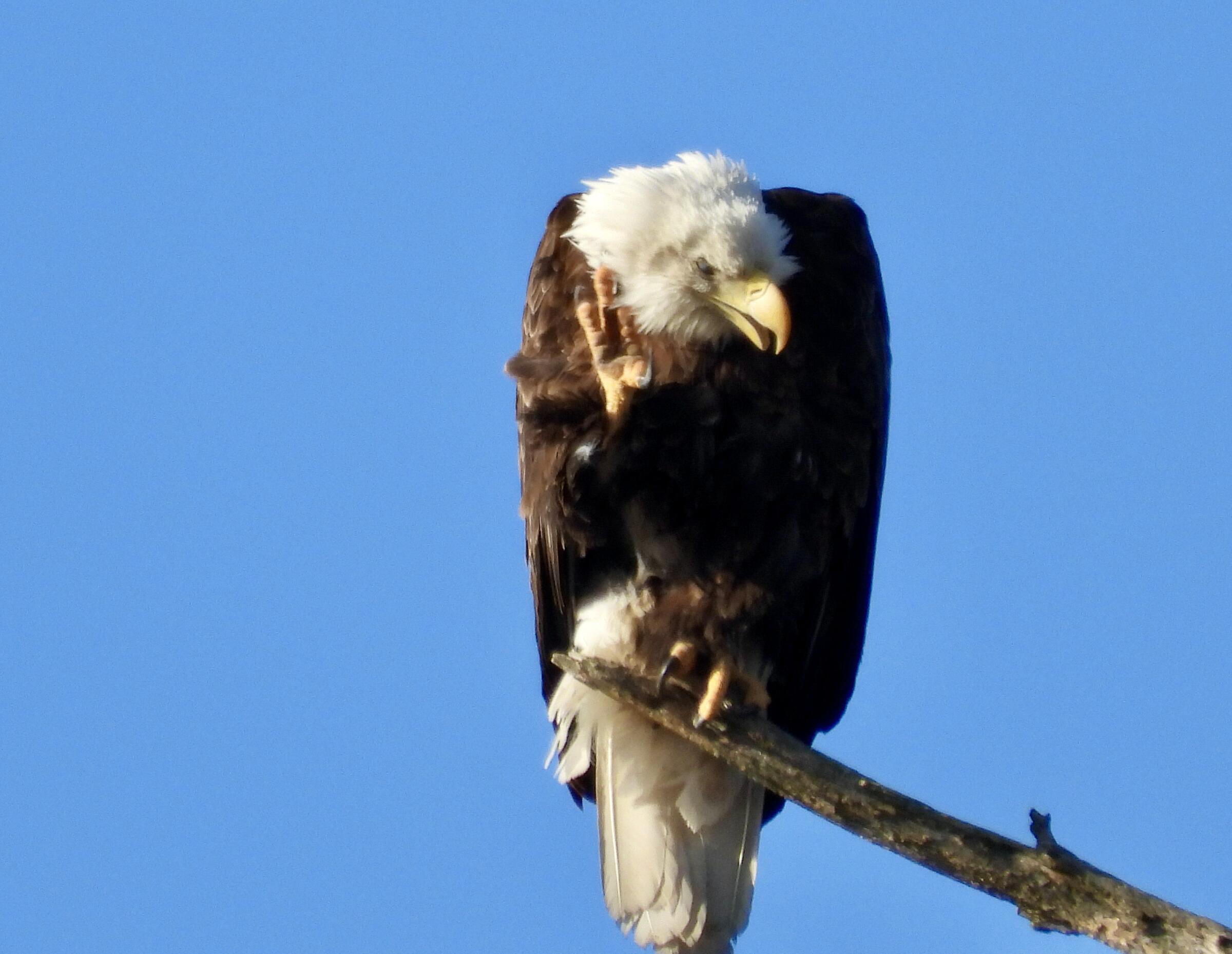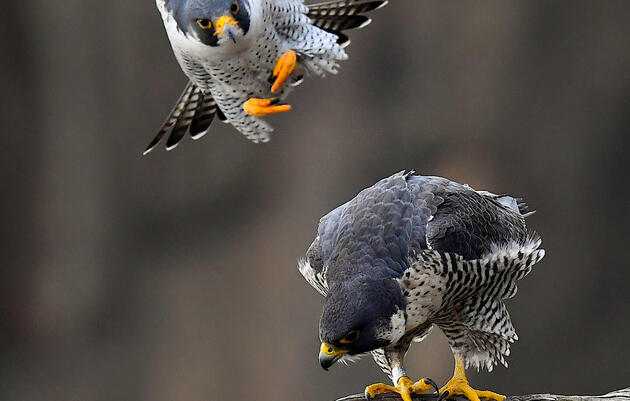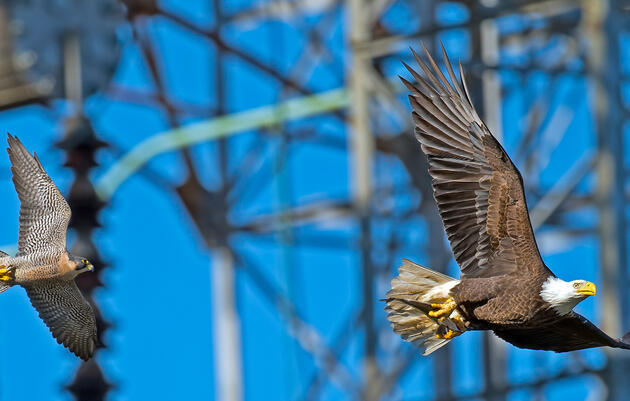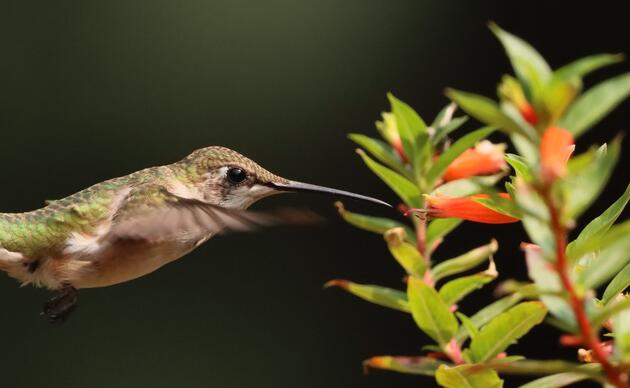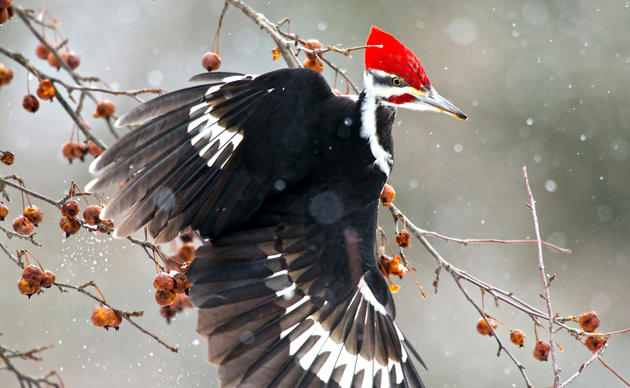Across Vermont, a dedicated team of community scientists plays a vital role in monitoring and conserving the state's Peregrine Falcon and Bald Eagle populations. Among them is Robyn Cook-Hubner, a volunteer with Audubon Vermont’s peregrine and eagle monitoring programs, who recently shared insights into her experience and reflections on the significance of this work. From observing eagle fledglings taking their first flights to witnessing the quiet beauty of Vermont’s wild spaces, Robyn's story offers a unique perspective on the impact of community science.
Building Connections
Since 2019, Robyn and her partner Larry have been monitoring nest sites across a large portion of eastern Vermont. Their work spans from Derby to Sharon, Barre, and Fairlee, each site providing new insights and challenges. Each year, they watch over numerous pairs of eagles and peregrines, tracking their nesting progress from the return of the pair in the spring through incubation, hatch, and successful fledging.
Robyn's journey with Audubon Vermont began through a shared connection. “Margaret (Margaret Fowle, coordinator of the monitoring project) and I worked together at the National Wildlife Federation before she migrated to Audubon, so I could hardly wait to reconnect with the raptor program when I retired,” she shared. Her enthusiasm for birding, however, had started much earlier. "One of my first dates with Larry 47 years ago was an Audubon field trip to Moose Bog Lake in Ferdinand. We both had several years of interest in birding at that time."
For Robyn, it’s impossible to choose just one favorite bird. Each species offers something unique: the Red-winged Blackbird, as the first song of spring; the Veery, with its ethereal melodies; the chickadee and nuthatch, bold enough to eat from a person's hand. The species she monitors stand out as well-- the Peregrine Falcon for its speed and fierce precision, and of course, the Bald Eagle, for its impressive size and universal popularity. “Everyone we encounter in the field gets that certain look on their face when we say we’re monitoring eagles,” Robyn reflected.
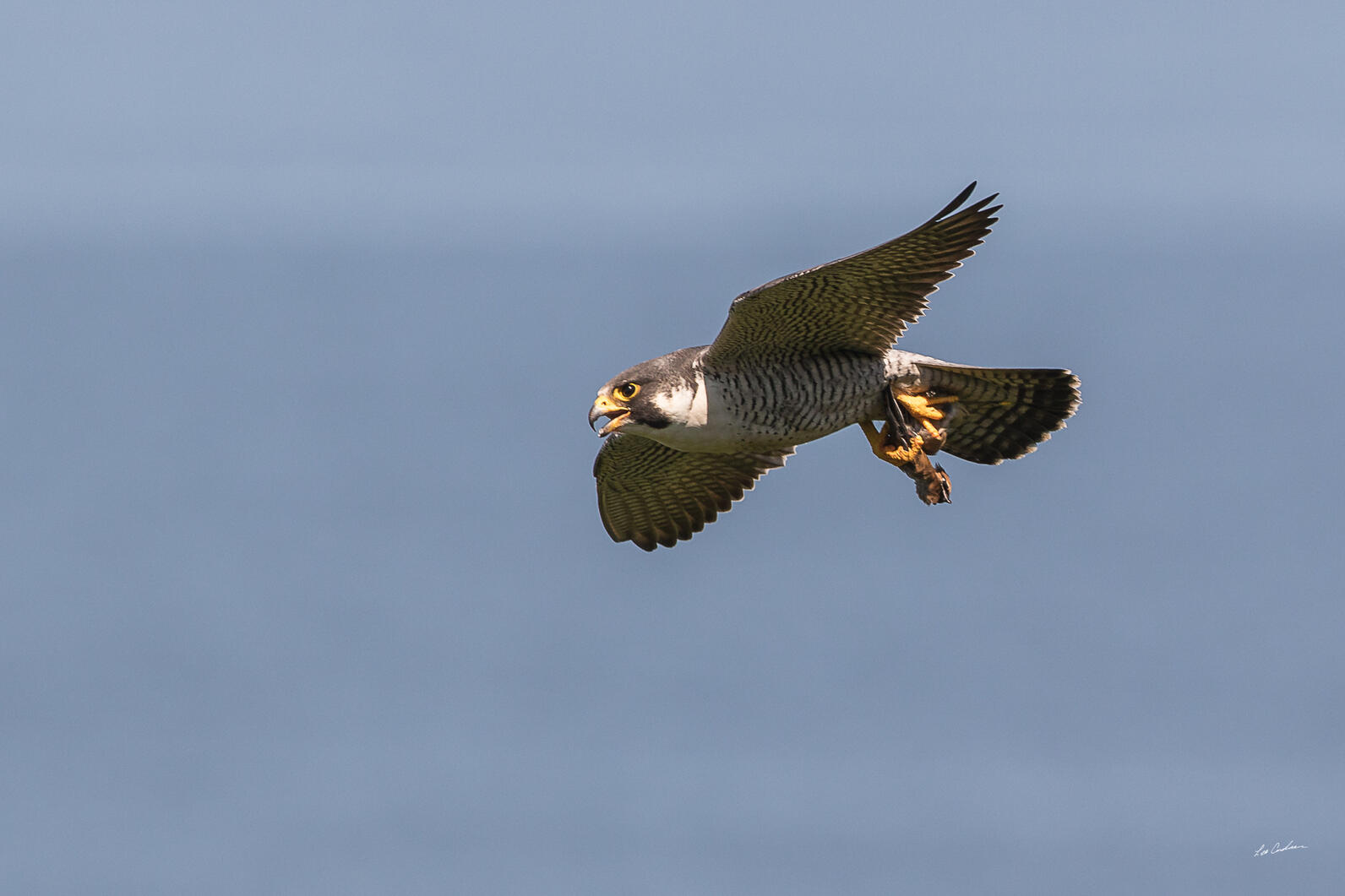
A Typical Day of Monitoring
According to Robyn, monitoring nests is a peaceful activity, punctuated by moments of excitement and anticipation. After setting up a spotting scope and a couple lawn chairs, she and her partner look for any activity in the nest area. They survey the area broadly with the naked eye, closer with binoculars, and closer still with the scope.
When monitoring eagles, they'll look for a number of signs throughout the breeding season. Before eggs are laid, they might observe the adults building or repairing the nest. One day, they’ll spot a white head, just visible above the rim of the nest—an adult incubating eggs. As the season progresses, small, fuzzy heads begin to emerge. Each visit brings new observations: watching feedings and noting the eaglets’ development. As they mature, the young eaglets venture out of the nest onto nearby limbs, flapping their wings in preparation for fledging. Then, one day, they return to find the nest empty— the chicks have fledged!
Monitoring peregrines often requires a bit more patience. During incubation, they might wait for hours for a nest exchange. They listen closely for the peregrines’ distinctive calls and watch as one adult returns with prey to relieve its partner from incubation duties. In time, the chicks hatch, and eventually, they can be seen on the ledge, tentatively walking and flapping their wings to build strength for their first flight. After fledging, young falcons can be spotted along the cliffs and perched in nearby trees until, like the eagles, they move on.
While nest monitoring can be a solitary endeavor, having a partner makes the process both more enjoyable and more effective. As Robyn explains, “It's doable on your own, but even better with a mate—for comparisons, ideas, and to occasionally keep an eye on more than one place at a time.”
First Flight
“The best part of monitoring?” Robyn said without hesitation. “No doubt—first flight. We have been fortunate to see this a few times.” She recalled watching a young eaglet on the edge of the nest, hesitating before taking its first flight. After hesitating, walking sideways, bobbing up and down, and flapping its wings, it finally leapt into the air and flew as if it had been flying all its life. “They all do that—the thing they have to learn is landing. They do quite a bit of crash landing before they master it.”
She shared another memorable experience of the last Peregrine Falcon chick to fledge in Barnet, left behind by its siblings as they were off flying with the adults. “It wailed and wailed for them for half an hour or so until one adult returned and landed about six feet from the chick. As the chick approached the adult, the adult flew, circled and landed again at another distance. After a couple more of these encouraging forays, the chick took flight to follow the adult.” It’s these kinds of moments that make monitoring work so rewarding.
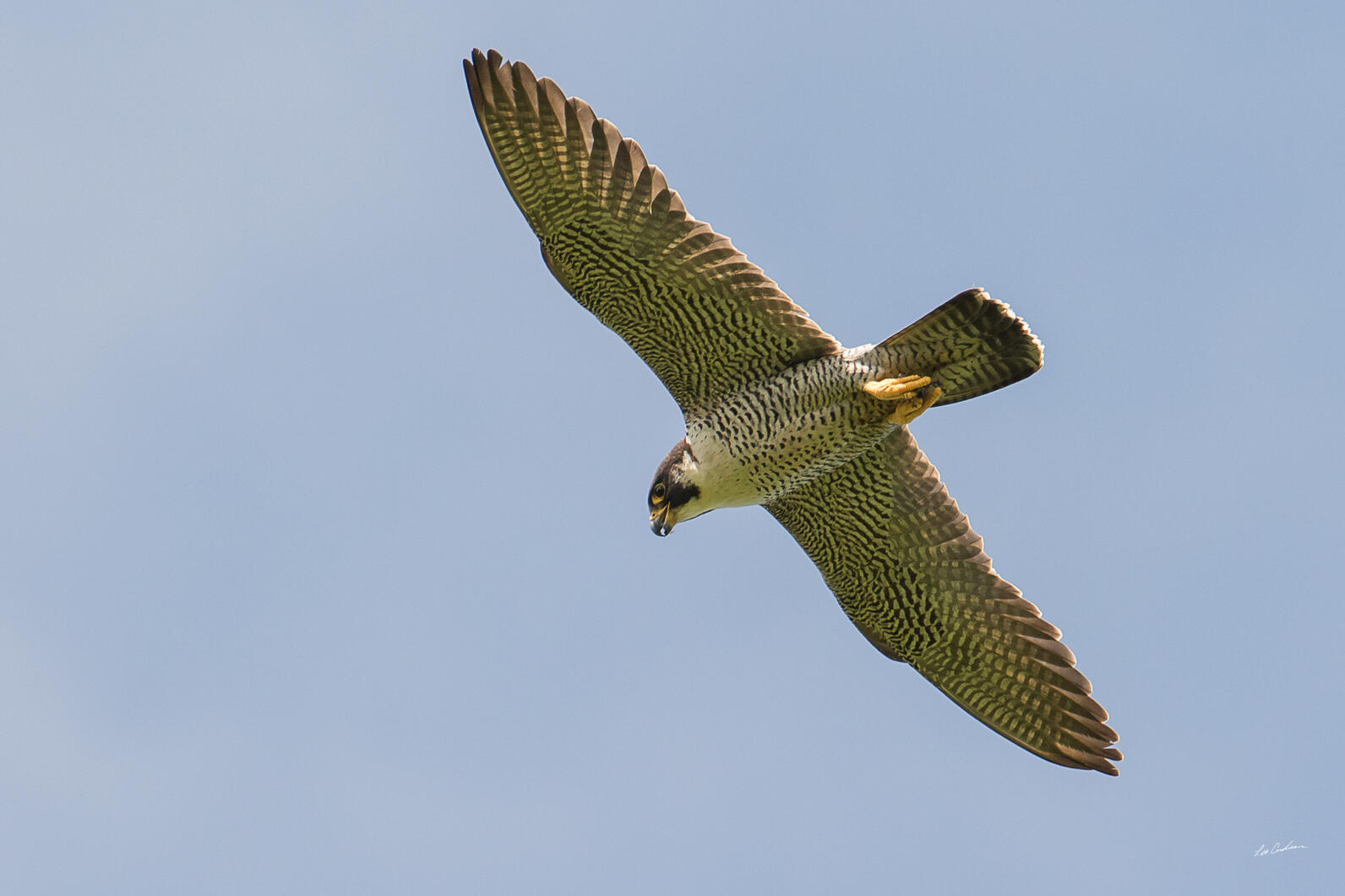
Volunteering has not only allowed Robyn to witness special moments like these first flights, it has also brought a greater appreciation for Vermont’s landscapes. During nest site visits, she is able to observe both the target species and a wide range of other wildlife. “We have very intimate relationships with our sites. We know them well, due to the intense scrutiny of the area and the frequency of our visits,” she explained.
Words of Wisdom
When it comes to advice for those starting out in the nest monitoring program, Robyn emphasizes the importance of sharing-- both the view and the story behind it. “If you’re approached by curious fellow travelers, let them look through your scope. Tell them what you're doing and why. It will put a smile on their face,” she said.
The Role of Community Science
Monitoring projects like Audubon’s are important not just for the conservation of individual species but for the broader health of Vermont’s ecosystems, and community scientists keep these projects running. “It's important to collect this data to ensure that these species do not decline into endangered status again, and to prepare for increased protection if they do,” Robyn said. “It’s important for volunteer citizen scientists to support the work of non-profit conservation organizations like Audubon—now more than ever. It would be very difficult, perhaps impossible, for staff to perform all the work necessary to maintain the current level of vigilance without Audubon’s volunteer team.”
In closing, Robyn reflected on what makes her work meaningful: “It's important to us personally to have the opportunity to witness natural order in a world of chaos,” she explained. “There's little that’s more gratifying, as we return to our sites in the Spring, to discover that our birds have returned, and all is right with this part of the planet.”
All photos for this article were provided by our volunteer nest monitors. Explore more moments from the field in the slideshow below!
Interested in contributing to Vermont’s raptor conservation efforts? Volunteering with Audubon Vermont offers a rewarding way to connect with nature and help protect these incredible birds for future generations. To learn more about the history of these species in the state and discover the ongoing efforts to sustain their recovery, visit our Peregrine Falcon Monitoring and Management page and Bald Eagle Recovery page.

